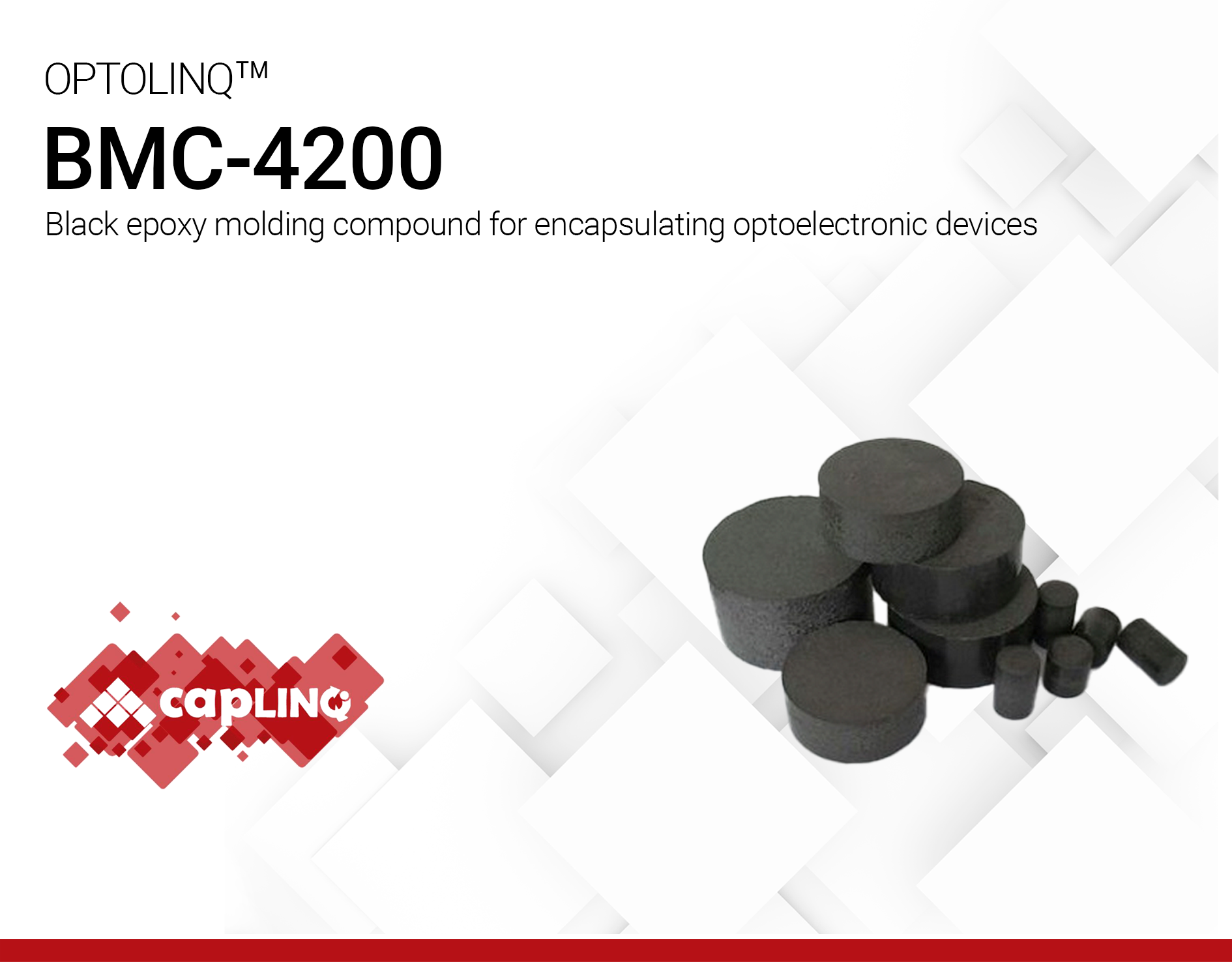OPTOLINQ BMC-4200| Opaque Mold Compound
- Opaque
- Suitable spiral flow for molding conditions
- Superior reliability
Product Description
OPTOLINQ BMC-4200 is a Series of Opaque molding compounds used as encapsultation of optoelectronic devices. It exhibits excellent moldability under suitable spiral flow conditions.
This material exhibits excellent thermal stability, meaning it can withstand high temperatures without significant degradation. Additionally, it possesses outstanding mechanical processing performance, making it easily moldable and shapeable during manufacturing.
The material's remarkable moldability allows for precise and intricate molding of optoelectronic devices, ensuring consistent and high-quality production. Furthermore, its superior reliability ensures that the molded devices maintain their performance and functionality over extended periods, making it a highly dependable choice for optoelectronic applications.
Molding information
OPTOLINQ BMC-4200 differs from other molding compounds and has some special procedures required.
Temperature recovery
OPTOLINQ BMC-4200 must first be allowed to achieve room temperature (20±5°C , 40±15% RH) for atleast 24 hours (Big size) and 12 hours (Small size), without opening the bag before using it, to avoid contamination.
Preheat
Preheating of OPTOLINQ BMC-4200 can be done by using standard RF equipment. The preheating should be done slowly to achieve uniform temperature.
Technical Specifications
| General Properties | |||||||||
| Specific Gravity Specific Gravity Specific gravity (SG) is the ratio of the density of a substance to the density of a reference substance; equivalently, it is the ratio of the mass of a substance to the mass of a reference substance for the same given volume. For liquids, the reference substance is almost always water (1), while for gases, it is air (1.18) at room temperature. Specific gravity is unitless. | 1.22 | ||||||||
| Physical Properties | |||||||||
| Spiral Flow @ 175°C | 80-240 cm | ||||||||
| Mechanical Properties | |||||||||
| |||||||||
| |||||||||
| |||||||||
| Thermal Properties | |||||||||
| |||||||||
| |||||||||
| Glass Transition Temperature (Tg) Glass Transition Temperature (Tg) The glass transition temperature for organic adhesives is a temperature region where the polymers change from glassy and brittle to soft and rubbery. Increasing the temperature further continues the softening process as the viscosity drops too. Temperatures between the glass transition temperature and below the decomposition point of the adhesive are the best region for bonding. The glass-transition temperature Tg of a material characterizes the range of temperatures over which this glass transition occurs. | 115 °C | ||||||||
| Curing Conditions | |||||||||
| |||||||||
| |||||||||
| Transfer Time | 40-60 s | ||||||||




